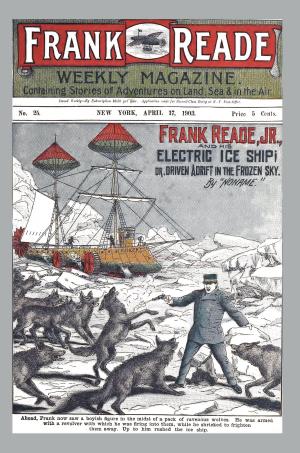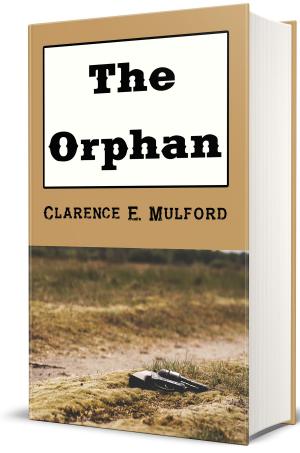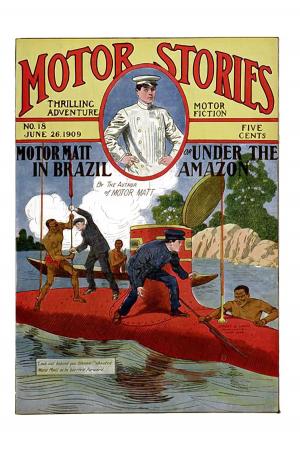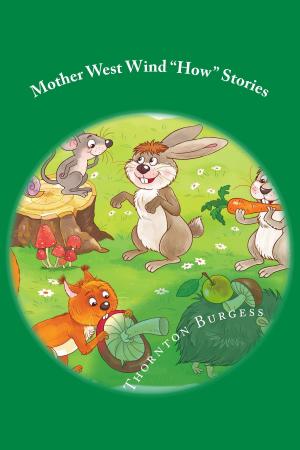Ohio River Trilogy (Illustrated)
Fiction & Literature, Native American & Aboriginal, Westerns, Action Suspense| Author: | Zane Grey | ISBN: | 1230003165102 |
| Publisher: | Reading Bear Publications | Publication: | April 2, 2019 |
| Imprint: | Language: | English |
| Author: | Zane Grey |
| ISBN: | 1230003165102 |
| Publisher: | Reading Bear Publications |
| Publication: | April 2, 2019 |
| Imprint: | |
| Language: | English |
The Ohio River Trilogy is a historical-fiction series about Zane Grey's ancestors which includes some of the first books Grey wrote. All three books in the trilogy were published in the first part of the 20th century, although Grey had to self-publish Betty Zane before it was finally recognized by the commercial publishing world.
The trilogy is complete and unabridged. Two of the three volumes were originally illustrated. These illustrations have all been rejuvenated and are included.
-
Betty Zane: Betty Zane was Zane Grey's great-grandniece. One of the main events in the story of Betty Zane is when she ran the gauntlet of attacking American Indians to resupply the defenders of gun-powder and bullets. When Zane Grey could not find a publisher for the book, he published it himself in 1903 using his wife's money. Grey later named his daughter Betty Zane after his famous aunt.
-
Spirit of the Border is based on events that took place in the Ohio River Valley in the late 18th century. It features the exploits of Lew Wetzel, a historical person who dedicated his life to the destruction of Native Americans and to the protection of white settlements in that region. The story deals with the attempt by Moravian missionaries to Christianize Indians and how two brothers' lives take different paths upon their arrival on the border.
-
The Last Trail is a good example of American literature written in the early part of the 20th century, where tradition and family values play a large part in daily life. A woman is kidnapped from Fort Henry by a band of renegades and hostile Ohio Valley Indians. Lewis Wetzel and Jonathan Zane take pursuit. With no hope of survival, they follow the trail into the unknown wilderness, vowing it to be their last venture. At trail's end, they will face their bloodiest battle.
Zane Grey (January 31, 1872 – October 23, 1939) was an American author best known for his popular adventure novels and stories that presented an idealized image of the American frontier. Riders of the Purple Sage (1912) was his best-selling book.
Pearl Zane Gray was born in Zanesville, Ohio. His birth name may have originated from newspaper descriptions of Queen Victoria's mourning clothes as "pearl gray". Grey was the fourth of five children born to Alice "Allie" Josephine Zane, whose English Quaker immigrant ancestor, Robert Zane, came to America in 1673, and Lewis M. Gray, a dentist. His family changed the spelling of their last name to "Grey" after Zane's birth. Later, he dropped Pearl and used Zane as his first name. Zanesville is a city founded by his maternal great-grandfather, Ebenezer Zane, an American Revolutionary War patriot; from an early age, the boy was intrigued by history. Grey also developed interests in fishing, baseball, and writing, all which contributed to his writing success. His first three novels recounted the heroism of his ancestors who fought in the American Revolutionary War.
As a child, Grey frequently engaged in violent brawls, despite (or because of) his father's punishing him with severe beatings. Though irascible and antisocial like his father, Grey was supported by a loving mother and found a father substitute. Muddy Miser was an old man who approved of Grey's love of fishing and writing, and who talked about the advantages of an unconventional life. Despite warnings by Grey’s father to steer clear of Miser, the boy spent much time during five formative years in the company of the old man.
Grey was an avid reader of adventure stories (Robinson Crusoe and Leatherstocking Tales) and dime novels (featuring Buffalo Bill and "Deadwood Dick"). He was enthralled by and crudely copied the great illustrators Howard Pyle and Frederic Remington. He was particularly impressed with Our Western Border, a history of the Ohio frontier that likely inspired his earliest novels. Zane wrote his first story, Jim of the Cave, when he was fifteen. His father tore it to shreds and beat him. Both Zane and his brother Romer were active, athletic boys who were enthusiastic baseball players and fishermen.
The Ohio River Trilogy is a historical-fiction series about Zane Grey's ancestors which includes some of the first books Grey wrote. All three books in the trilogy were published in the first part of the 20th century, although Grey had to self-publish Betty Zane before it was finally recognized by the commercial publishing world.
The trilogy is complete and unabridged. Two of the three volumes were originally illustrated. These illustrations have all been rejuvenated and are included.
-
Betty Zane: Betty Zane was Zane Grey's great-grandniece. One of the main events in the story of Betty Zane is when she ran the gauntlet of attacking American Indians to resupply the defenders of gun-powder and bullets. When Zane Grey could not find a publisher for the book, he published it himself in 1903 using his wife's money. Grey later named his daughter Betty Zane after his famous aunt.
-
Spirit of the Border is based on events that took place in the Ohio River Valley in the late 18th century. It features the exploits of Lew Wetzel, a historical person who dedicated his life to the destruction of Native Americans and to the protection of white settlements in that region. The story deals with the attempt by Moravian missionaries to Christianize Indians and how two brothers' lives take different paths upon their arrival on the border.
-
The Last Trail is a good example of American literature written in the early part of the 20th century, where tradition and family values play a large part in daily life. A woman is kidnapped from Fort Henry by a band of renegades and hostile Ohio Valley Indians. Lewis Wetzel and Jonathan Zane take pursuit. With no hope of survival, they follow the trail into the unknown wilderness, vowing it to be their last venture. At trail's end, they will face their bloodiest battle.
Zane Grey (January 31, 1872 – October 23, 1939) was an American author best known for his popular adventure novels and stories that presented an idealized image of the American frontier. Riders of the Purple Sage (1912) was his best-selling book.
Pearl Zane Gray was born in Zanesville, Ohio. His birth name may have originated from newspaper descriptions of Queen Victoria's mourning clothes as "pearl gray". Grey was the fourth of five children born to Alice "Allie" Josephine Zane, whose English Quaker immigrant ancestor, Robert Zane, came to America in 1673, and Lewis M. Gray, a dentist. His family changed the spelling of their last name to "Grey" after Zane's birth. Later, he dropped Pearl and used Zane as his first name. Zanesville is a city founded by his maternal great-grandfather, Ebenezer Zane, an American Revolutionary War patriot; from an early age, the boy was intrigued by history. Grey also developed interests in fishing, baseball, and writing, all which contributed to his writing success. His first three novels recounted the heroism of his ancestors who fought in the American Revolutionary War.
As a child, Grey frequently engaged in violent brawls, despite (or because of) his father's punishing him with severe beatings. Though irascible and antisocial like his father, Grey was supported by a loving mother and found a father substitute. Muddy Miser was an old man who approved of Grey's love of fishing and writing, and who talked about the advantages of an unconventional life. Despite warnings by Grey’s father to steer clear of Miser, the boy spent much time during five formative years in the company of the old man.
Grey was an avid reader of adventure stories (Robinson Crusoe and Leatherstocking Tales) and dime novels (featuring Buffalo Bill and "Deadwood Dick"). He was enthralled by and crudely copied the great illustrators Howard Pyle and Frederic Remington. He was particularly impressed with Our Western Border, a history of the Ohio frontier that likely inspired his earliest novels. Zane wrote his first story, Jim of the Cave, when he was fifteen. His father tore it to shreds and beat him. Both Zane and his brother Romer were active, athletic boys who were enthusiastic baseball players and fishermen.















